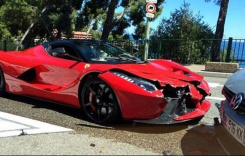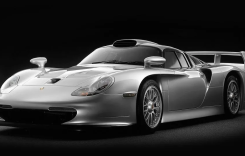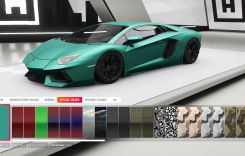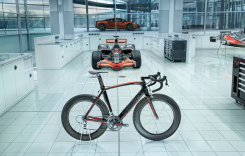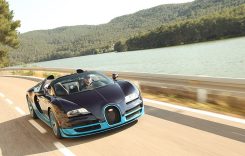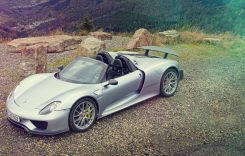MORE THAN MEETS THE EYE
Although we touched on the major technical updates in the 959 Panigale First Look preview, there are additional details to reveal. In addition to the longer-stroke Superquadro engine (identical stroke measurement to the 1199/1299), engineers fitted another pair of showerhead-style fuel injectors atop the throttle bodies. This complements the extra displacement, netting a stronger spread of power throughout its 11,500 rpm powerband (a 200 rpm increase compared to the 899).

Other powertrain upgrades include the fitment of the 1299 Panigale’s 60mm diameter exhaust pipes, a slipper-assist clutch basket and high-flow paper-type air filter. The cylinder head and case covers were also tweaked slightly to reduce noise in compliance with Euro 4 emission/noise standards. Like its 899 predecessor those components on the 959 are manufactured from cast aluminum instead of the 1299’s lighter magnesium bits.

The swingarm pivot point is lowered by 4mm. That along with a one-tooth smaller rear sprocket extends wheelbase by 5mm. The shape of the component is also slightly different to accommodate the dual muffler European-spec exhaust system. Pictured above is a U.S. machine.
On the chassis side, the double-sided swingarm has been tweaked (to accommodate the European-spec shotgun-style side exhaust) and the pivot point is 4mm lower (similar to what Ducati did in 2013 with its R-spec 1199 Panigale). Further changes include a one-tooth smaller rear sprocket and wheelbase stretches by 5mm. Another notable improvement is the addition of high-grip machined footpegs for both rider and passenger.
Rounding out the hardware updates are a wider upper fairing with an added set of air intakes, a taller windscreen and fixed-position mirror stays. Ducati says the tail section is tweaked as well, but we couldn’t notice a difference visually compared to the outgoing 899.
PANIGALE EVEN MORE FUN-SIZED
During the course of our last few tests, the junior Panigale has established itself as the preferred Ducati Superbike for corner carving missions, both on the street and racetrack. Why? Because it’s more manageable engine size makes it easier to control at full-tilt. And the 959 reinforces that sentiment.
Still a revver, the added piston stroke helps the Ducati accelerate off turns with extra gusto. Strangely, the 959’s mid-range boost isn’t as extreme as we remember during the 1199/1299 transition (which increased bore, instead of stroke), but it does increases the vehicle’s flexibility. Riders don’t have to work the 959’s shift lever nearly as much compared to the 899, as the extra torque can pull a higher gear in some corners.

The 959 Panigale is still a revver but the added stroke and addition fuel injectors boost mid-range power slightly helping the junior Panigale accelerate off turns.
As usual, the Ducati’s factory-equipped quickshifter makes smooth work of upshifts, however, it could actuate faster versus other factory e-shifter set-ups we’ve tried recently from Japan and Germany. It would also be neat if engineers borrowed the 1299’s auto-blip/downshift-assist function, but considering its price (MSRP is the same as the original ’14 899) we’re happy to engage a lower gear the old fashioned way, with synchronized hands and left foot.

Exhilarating with calibrated throttle response, the 959 delivers the buzz we crave from Ducati sportbikes. Yet with its three-way adjustable engine power, and eight traction control settings, it can be sampled more easily, in a wider range of environments and rider skill sets. Riding at your favorite racetrack? Put it in ‘Race’ mode. Wanna pop wheelies on the weekend? The ‘Sport’ setting is perfect for that. Riding on a tight, damp or unfamiliar road? Then you’ll want the ‘Wet’ setting.
Another nice touch is the easier squeezing clutch lever. We also like the clutch’s mechanical back torque limit function (prevents rear wheel hop), which complements the Electronic Brake Control (EBC) that modulates the amount of fuel entering the engine during deceleration. The EBC controls engine brake effect during high-rpm downshifts.

Suspension and brakes are carry-over parts from the 899 but they get the job done without any drama on the 959 as well. Although more simple looking than the 1299’s full-color display, the monochrome set-up is easy to read while riding. Electronic adjustments however have to be made while the motorcycle is stationary.

